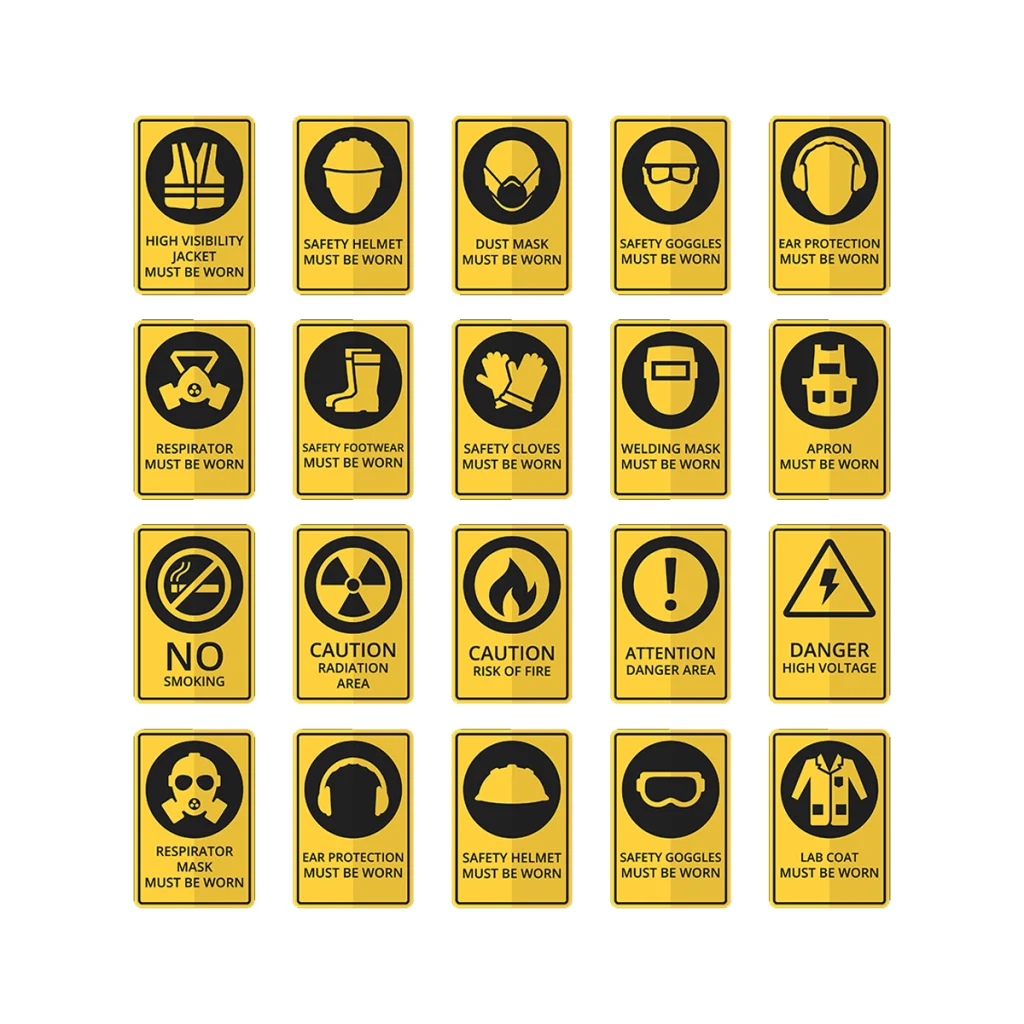
Instructional signs are essential communication tools within Fire and Safety Signage, providing clear directions, guidance, and safety instructions in a variety of settings. These signs play a critical role in ensuring that individuals understand how to navigate environments safely and efficiently. Commonly used in workplaces, public spaces, roadways, and industrial facilities, instructional signs deliver vital information to help prevent accidents and maintain order. As a key component of Fire and Safety Signage, their clear, concise messaging is crucial for ensuring that instructions are followed in compliance with safety and regulatory standards.
Instructional signs are designed to convey information clearly and efficiently, with several features that make them effective across various environments:
Instructional signs are used in a wide range of industries and public spaces to provide essential guidance and instructions:
In factories and warehouses, instructional signs are used to guide workers on proper safety procedures, machine operation, and hazard prevention. These signs help ensure that everyone follows the necessary steps to maintain safety and productivity.
In office settings, instructional signs offer directions for evacuation routes, safety protocols, and usage of facilities. They help employees and visitors navigate the building safely while complying with safety regulations.
Hospitals and clinics use instructional signs to guide patients, visitors, and staff toward critical areas such as emergency exits, treatment rooms, or sanitation stations. These signs improve safety and efficiency in high-traffic environments.
Instructional signs in public areas, such as parks, transportation hubs, and shopping centers, often complement directional signs to provide clear navigation and communicate safety rules through warning signs.
On construction sites, instructional signs inform workers of safety procedures, proper use of personal protective equipment (PPE), and areas to avoid due to ongoing work. These signs are essential for maintaining compliance with safety regulations.
Instructional signs offer numerous benefits that enhance safety, communication, and compliance across different environments:
Instructional signs provide clear and concise information, ensuring that individuals understand what actions they need to take. This reduces confusion and ensures that safety procedures and operational guidelines are followed correctly.
By providing essential directions and instructions, instructional signs help prevent accidents and improve the overall flow of operations in workplaces, public spaces, and industrial facilities.
Many instructional signs are designed to meet safety and regulatory standards. This ensures that businesses remain compliant with legal requirements, avoiding fines and ensuring a safer environment for workers and the public.
Instructional signs are made from long-lasting materials that can withstand harsh conditions, ensuring that the message remains clear and readable over time. These signs can be used in a variety of settings, both indoors and outdoors.
Customizable options allow businesses and organizations to create instructional signs tailored to their specific needs, addressing unique safety or operational requirements in different industries.
Proper installation and maintenance of instructional signs are crucial to ensuring their effectiveness. Here are some tips for optimal performance:
Ensure clear communication and safety in your workplace or public area with high-quality instructional signs. Contact us today for a quote or visit our website to explore our range of customizable signs designed to meet your specific needs. Our team is ready to help you find the best solutions to enhance safety and efficiency in your environment.